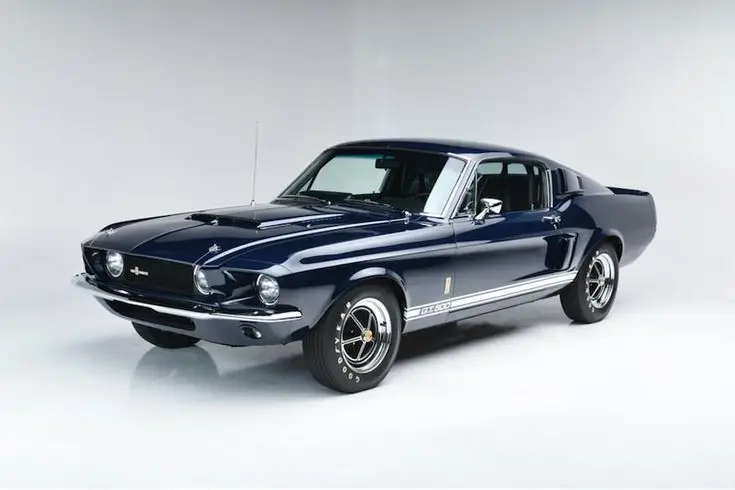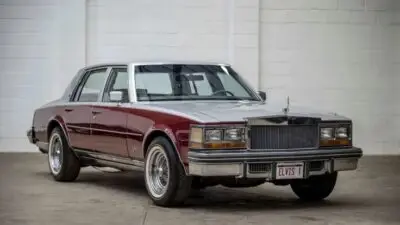In the 1960s and early 1970s, American streets rumbled with the sound of Detroit’s most powerful creations. The horsepower war between automakers transformed ordinary family cars into fire-breathing machines that captured the imagination of a generation. Detroit’s Big Three manufacturers—Ford, General Motors, and Chrysler—engaged in an escalating battle of engine displacement and performance that produced iconic vehicles still revered by enthusiasts today.

This era of automotive innovation wasn’t just about speed—it represented American industrial might and technical prowess. As engineers pushed the boundaries of what was possible, vehicles like the Chevrolet Chevelle SS 454 emerged with almost as much horsepower as modern performance cars. The muscle car became more than transportation; it evolved into a uniquely American cultural icon that defined an era when automotive power was the ultimate status symbol.
Key Takeaways
- The muscle car era represented an intense competition between American automakers that revolutionized performance vehicle design and marketing.
- Legendary models like the Chevelle SS 454 achieved horsepower figures that rival modern performance vehicles despite their vintage status.
- Muscle cars transcended their role as vehicles to become cultural symbols that continue to influence American automotive identity decades later.
The Dawn of the Muscle Car Era

The American automotive landscape changed forever when Detroit manufacturers began packing powerful V8 engines into mid-sized car bodies. This innovation sparked a competitive era that would define American car culture for generations.
Defining the Muscle Car
A muscle car is specifically an American-made two-door sports coupe with a powerful engine designed for high-performance driving. These vehicles typically featured mid-size bodies with large-displacement V8 engines, creating an ideal power-to-weight ratio.
The classic muscle car formula prioritized straight-line acceleration over handling or luxury features. Manufacturers marketed these vehicles to younger buyers seeking affordable performance.
What separated muscle cars from other high-performance vehicles was their accessibility. Unlike expensive European sports cars, muscle cars offered ordinary Americans the thrill of automotive power at a reasonable price point.
The Birth of Power: Early Innovations
The muscle car era began taking shape in the late 1940s with pioneering models that set the stage for what was to come. The 1949 Oldsmobile Rocket 88 stands as one of the earliest examples, combining a lightweight body with a high-output V8 engine.

By the mid-1950s, the 1955 Chrysler 300 pushed performance boundaries further. These early innovators demonstrated the market potential for performance-focused vehicles.

The true horsepower war began in earnest when the Big Three automakers – General Motors, Ford, and Chrysler – started competing directly with increasingly powerful engines. Engineers developed specialized high-performance packages that included upgraded carburetors, higher compression ratios, and more aggressive camshafts.
This competition between manufacturers transformed American car culture and established the foundation for the golden age of muscle cars that would follow in the 1960s.
Key Players in the Horsepower War

The American muscle car era featured intense competition between Detroit’s “Big Three” automakers, each introducing increasingly powerful engines and iconic models that would define automotive history.
General Motors and the Iconic GTO
General Motors led the muscle car revolution with the introduction of the Pontiac GTO in 1964. This model, championed by Pontiac engineer John DeLorean, transformed a modest Tempest into a performance beast by installing a large 389 cubic inch V8 engine.
The GTO wasn’t GM’s only player in this battle. Chevrolet entered the fray with its Chevelle SS and later the Camaro Z/28. These high-performance machines featured powerful small and big-block V8 engines.
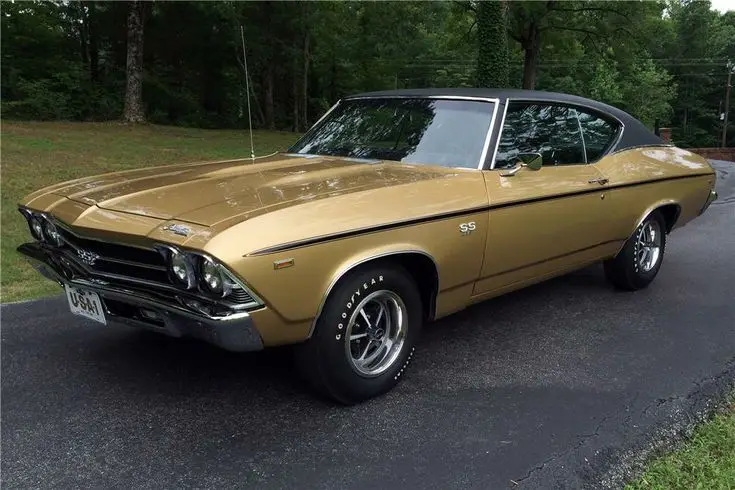

Buick and Oldsmobile also contributed significantly to GM’s muscle car lineup. The Buick Gran Sport and Oldsmobile 442 proved that GM’s divisions could compete not just with external rivals but also with each other in what became an internal horsepower war.


GM’s success came from its multi-brand strategy that allowed it to target different segments of the market while pushing performance boundaries across all its divisions.
Mopar: Plymouth, Hemi, and Beyond
Chrysler’s Mopar performance division created some of the most powerful muscle cars of the era. The Plymouth Road Runner and GTX became legendary for their combination of affordable prices and raw power.
The crown jewel in Mopar’s arsenal was undoubtedly the 426 Hemi engine. This hemispherical combustion chamber design produced tremendous power, earning the nickname “Elephant” for its size and strength. When installed in cars like the Dodge Charger and Plymouth Barracuda, it created some of the most formidable machines on the street.
Mopar’s “Six Pack” and “Six Barrel” multi-carburetor setups offered alternatives to the expensive Hemi while still delivering impressive performance. These innovations helped Chrysler compete effectively against larger rivals.
Plymouth’s budget-friendly Road Runner, with its cartoon mascot and “beep-beep” horn, proved that muscle cars could be both powerful and accessible to younger buyers with limited budgets.
Ford’s Cobra Jet Legacy
Ford entered the muscle car wars with determination, developing the legendary Mustang into a true performance machine. While the early Mustangs were sporty, they weren’t true muscle cars until more powerful engines arrived.
The breakthrough came with the introduction of the Cobra Jet engine in 1968. This 428 cubic inch V8 transformed the Mustang and other Ford models like the Torino into legitimate contenders in the horsepower wars.
Ford’s partnership with Carroll Shelby produced special high-performance variants like the GT350 and GT500, which further enhanced their performance credentials. These limited-production models combined racing technology with street-legal packages.
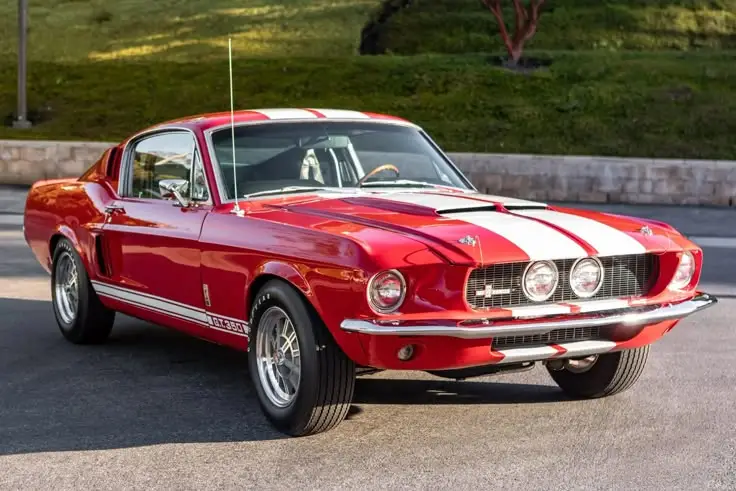

The Boss 302 and Boss 429 Mustangs represented Ford’s ultimate muscle car development, with race-bred engines designed specifically to win on the track and dominate on the street. These models remain among the most collectible muscle cars ever produced.


Evolution of Horsepower

The American muscle car era saw an unprecedented escalation in engine performance as manufacturers competed to outdo each other with increasingly powerful V8 engines. Detroit’s automakers engaged in a fierce battle that transformed automotive design and engineering.
Engineering Breakthroughs in Engine Performance
The muscle car revolution was fueled by significant innovations in V8 engine technology. In 1949, Oldsmobile introduced its high-compression V8 in the 88 model, setting the stage for what would become the horsepower war between manufacturers.
Chrysler made a game-changing move with the introduction of the 426 Hemi V8. This powerful engine dominated the streets during the Golden Age and transformed American performance cars forever.
Key engineering advances included:
- High-compression ratios
- Improved intake systems
- Better fuel delivery
- Overhead valve designs
By 1970, horsepower ratings had reached astonishing levels, with the Chevy Chevelle SS 454 LS6 becoming the horsepower champion of the classic era.
Competition Between Manufacturers
Detroit’s Big Three automakers – GM, Ford, and Chrysler – engaged in an intense rivalry that drove innovation. This competition transformed American car culture and defined an era of automotive excellence.
Each company pushed boundaries to capture market share. Chrysler’s Hemi engines battled Ford’s 427 and 428 powerplants, while GM countered with its 454 and 455 cubic inch monsters.
The competition extended beyond the showroom to the racetrack and drag strip. Manufacturers sought racing victories to boost their performance credentials and street cred.
Even police vehicles became platforms for high-performance engineering. In one notable comparison, the Dodge Charger police package improved its lap time by three seconds in a single model year, demonstrating the rapid pace of development.
This fierce competition pushed horsepower figures from the 300s to well over 400 in just a few years, creating legends that still captivate enthusiasts today.
Cultural Impact and Consumerism

Muscle cars transformed American culture beyond mere transportation, creating new social hierarchies and reshaping how automakers marketed high-performance vehicles to eager consumers.
Muscle Cars as Status Symbols
Muscle cars quickly became powerful status symbols in American society during the 1960s and 1970s. Owning a high-horsepower vehicle transformed social standing in communities across the country.
Young buyers particularly valued these cars for their image. A Pontiac GTO or Dodge Charger parked in a driveway announced success and rebellion simultaneously. The convertible variants commanded even greater prestige, combining performance with open-air luxury.
Car clubs formed around specific models, creating social communities centered on ownership. Members would gather to compare modifications and showcase their prized possessions at local cruising spots.
Detroit’s Woodward Avenue became an iconic gathering place where muscle car owners displayed their vehicles. These informal exhibitions reinforced the status hierarchy among enthusiasts.
Marketing and Sales Battle
Automakers engaged in sophisticated marketing campaigns to capture the growing muscle car market. Each brand developed distinctive strategies to position their offerings against competitors.
Television commercials featured dramatic demonstrations of power and speed. Print advertisements emphasized performance statistics with bold headlines touting horsepower figures and quarter-mile times.
The “horsepower war” between manufacturers drove continuous innovation. When Chevrolet released a more powerful engine, Ford and Dodge quickly responded with their own upgraded powerplants.
Special editions created artificial scarcity and premium pricing opportunities. Limited production models like the Plymouth Superbird or Chevrolet Chevelle SS 454 commanded higher prices and generated showroom excitement.
Dealers created dedicated performance sections in their showrooms. These specialty areas featured bright lighting, racing imagery, and knowledgeable sales staff trained to explain performance specifications to potential buyers.
Challenges of the Muscle Car Industry

The American muscle car faced significant obstacles during its golden era, with external forces ultimately threatening the very existence of these high-performance machines. Economic realities and government intervention created a perfect storm that changed the muscle car landscape forever.
Rising Insurance Premiums and Regulation
Detroit’s horsepower war caught the attention of insurance companies, who quickly identified muscle cars as high-risk vehicles. By the early 1970s, insurance premiums for these vehicles skyrocketed, sometimes costing more than monthly car payments. Young drivers were particularly hard hit by these increases.
Safety concerns also prompted new regulations. The National Highway Traffic Safety Administration, established in 1970, introduced stringent safety standards that required costly redesigns.
Emissions regulations further complicated matters. The Clean Air Act of 1970 mandated significant reductions in pollutants, forcing manufacturers to add power-robbing equipment like catalytic converters and exhaust gas recirculation systems.
These regulatory changes directly impacted performance. Automakers had to detune engines and reduce compression ratios, dramatically reducing the horsepower that had defined Detroit’s muscle car supremacy.
Fuel Economy and the Oil Crisis
The 1973 oil crisis delivered perhaps the most devastating blow to muscle cars. When OPEC imposed an oil embargo, gasoline prices nearly quadrupled virtually overnight. Long lines formed at gas stations, and fuel rationing became common.
The thirsty V8 engines that powered these performance machines suddenly became serious liabilities. Cars that achieved only 8-12 miles per gallon were increasingly impractical for daily driving.
Consumer preferences shifted dramatically toward smaller, more efficient vehicles. The government established Corporate Average Fuel Economy (CAFE) standards in 1975, requiring manufacturers to meet specific fleet-wide fuel economy targets.
Detroit responded by downsizing vehicles and focusing on economy rather than performance. The Big Three automakers abandoned many iconic muscle car models or transformed them into shadows of their former selves, with small-displacement engines producing a fraction of their predecessors’ power.
Muscle Cars in Retrospect

Detroit’s iconic muscle cars left an indelible mark on American culture that continues to this day. These powerful vehicles transformed from high-performance status symbols to cherished classics and have recently experienced a notable revival.
The Lasting Appeal of Classic Muscle Cars
The enduring popularity of classic muscle cars stems from their unique combination of raw power, distinctive styling, and cultural significance. These vehicles represent a bygone era of American automotive excellence and innovation.
Collectors actively seek out original models like the Pontiac GTO, Dodge Charger, and Ford Mustang. The value of pristine examples has skyrocketed, with rare variants fetching six-figure sums at auctions.
The emotional connection to muscle cars transcends generations. Baby boomers who experienced the original Detroit horsepower wars firsthand pass their enthusiasm to younger enthusiasts.
Car shows, restoration clubs, and online communities keep the muscle car culture alive. These gatherings celebrate the engineering and design that made these vehicles automotive legends.
The Modern-Day Resurgence
In the early 2000s, American automakers recognized the potential of reviving their muscle car heritage. This led to modern interpretations that blend nostalgic styling with contemporary technology.
The Dodge Challenger, Chevrolet Camaro, and Ford Mustang reappeared with designs clearly inspired by their 1960s predecessors. These new models maintained the front-engine, rear-wheel-drive layout that defined the original muscle car formula.
Today’s muscle cars deliver performance that surpasses their ancestors. Models like the Dodge Challenger Hellcat produce over 700 horsepower—numbers that would have seemed impossible in the original era.
The modern muscle car revival demonstrates how Detroit’s Big Three automakers recognize the unique American appetite for powerful, attainable performance vehicles. This connection to automotive history provides these companies with brand identity that competitors cannot easily replicate.
Frequently Asked Questions

The muscle car era represents a defining chapter in American automotive history, with manufacturers pushing engineering limits to win over customers seeking raw power and performance. These questions explore the rise, fall, and rebirth of Detroit’s horsepower battles.
What factors contributed to the rise of muscle cars in America during the 1960s?
Post-war prosperity created a young, affluent generation eager for excitement and speed. This demographic shift coincided with Detroit’s growing engineering capabilities and competitive spirit.
The successful formula of placing powerful V8 engines in midsize car bodies created vehicles that were both affordable and formidable. The “Big Three” manufacturers battled for street supremacy, developing increasingly powerful engines.
Racing success sold cars, following the “win on Sunday, sell on Monday” philosophy that drove innovation. Television, movies, and youth culture celebrated speed and performance, further fueling demand.
How did the oil crisis in the 1970s impact the muscle car market?
The 1973-74 oil embargo caused gasoline prices to quadruple, making fuel-hungry muscle cars suddenly impractical. Insurers also began charging premium rates for high-performance vehicles, adding to ownership costs.
New emissions regulations forced manufacturers to detune engines and adopt pollution control equipment. These changes dramatically reduced horsepower figures from their late-1960s peaks.
Consumer preferences shifted toward economy and efficiency, causing muscle car sales to plummet. By mid-decade, many iconic models had been discontinued or transformed into shadow versions of their former selves.
Which muscle car models symbolize the pinnacle of the horsepower wars?
The 426 HEMI-powered Plymouth Road Runner represented raw, accessible power that defined the era. These cars delivered performance that pushed horsepower limits beyond imagination.
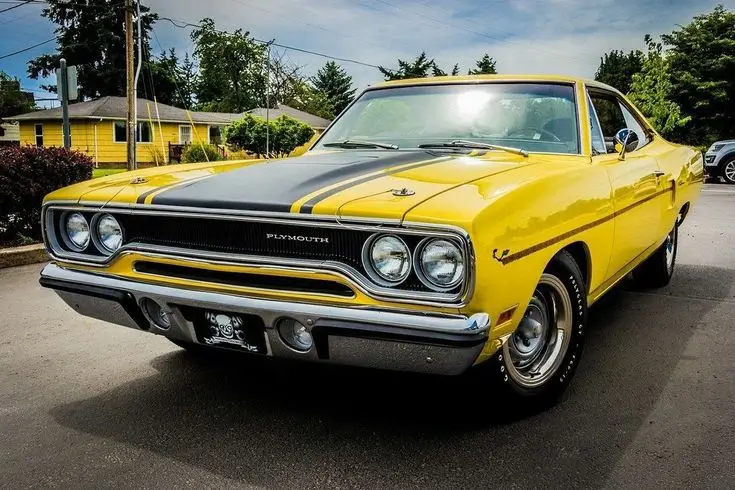
Chevrolet’s 1970 Chevelle SS 454 with the LS6 engine option offered 450 horsepower, representing GM’s peak muscle offering. The 1957 Corvette SS Project XP-64 showed America could challenge European racing supremacy.

The 1969-70 Ford Mustang Boss 429 featured NASCAR technology in a street-legal package. Pontiac’s GTO, often credited as the first true muscle car, helped launch the entire performance movement.
What technological advancements reignited the muscle car competition in recent years?
Computer-controlled engine management systems enabled high power with emissions compliance. Modern forced induction—superchargers and turbochargers—created previously impossible power figures while maintaining drivability.
Lightweight materials and improved chassis design allowed better handling to match increased power. The 2017 Mustang GT and Camaro SS models continued their historic rivalry with power levels that eclipsed their classic predecessors.
The introduction of the Dodge Challenger Hellcat proved Detroit could still produce outrageous power, shifting from the original “pony car” concept to a modern performance icon.
How have modern safety and emission regulations influenced muscle car design and performance?
Electronic stability control and advanced braking systems made high-power vehicles safer to drive. Aerodynamic improvements required for efficiency also enhanced high-speed stability.
Direct fuel injection, variable valve timing, and cylinder deactivation allowed huge power while meeting strict emissions standards. Computer modeling and simulation enabled engineers to test and refine designs before physical prototypes were built.
Modern muscle cars incorporate crumple zones, airbags, and advanced driver assistance systems while maintaining their performance heritage. These safety features make today’s muscle cars suitable for daily driving unlike their more dangerous ancestors.
Who were the main competitors in the muscle car era and what distinguished their vehicles?
Chevrolet focused on innovation and racing pedigree, with small-block V8s known for revability and handling. Ford responded with multiple performance tiers, from affordable Mustangs to specialized Boss and Shelby variants.
Dodge and Plymouth leveraged Chrysler’s HEMI technology for straight-line dominance. Their battle for pony car supremacy continues with modern Challengers competing against Mustangs and Camaros.
Pontiac distinguished itself with distinctive styling and innovative marketing. AMC, though smaller, created memorable muscle cars like the AMX and rebel Machine by focusing on value and unique engineering approaches.
